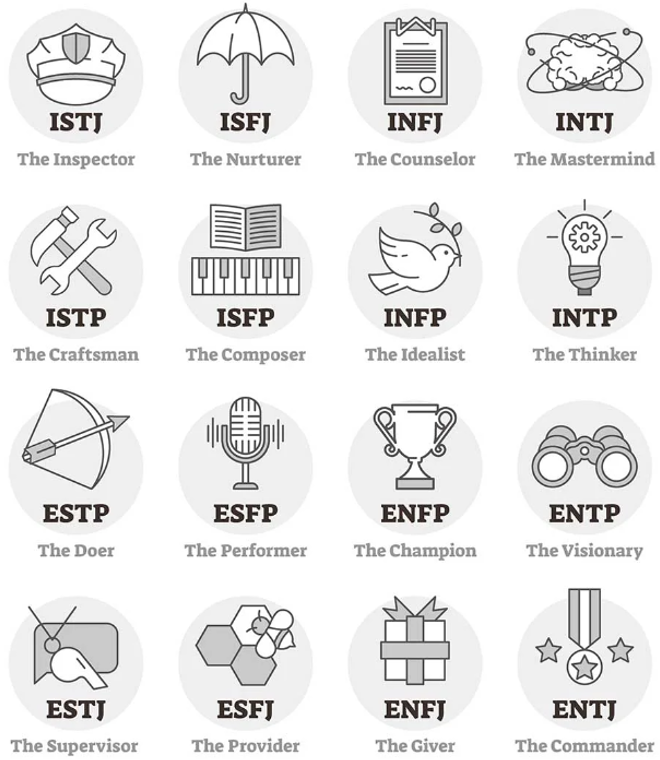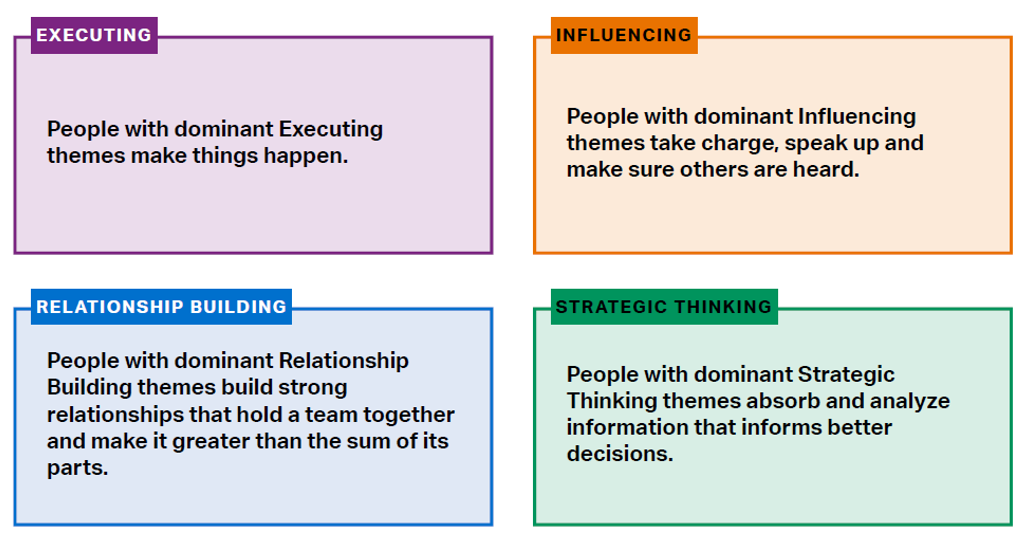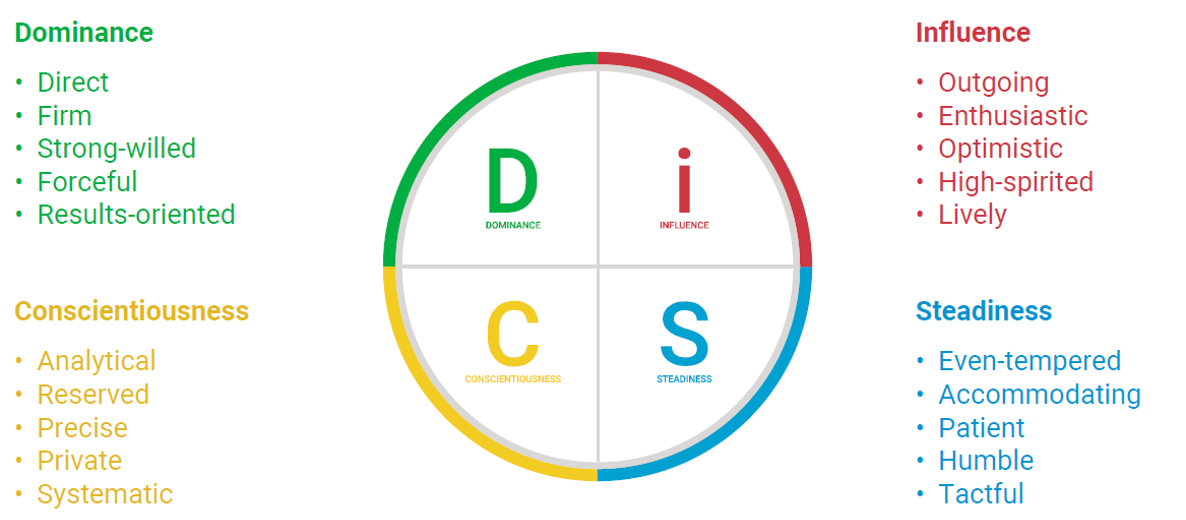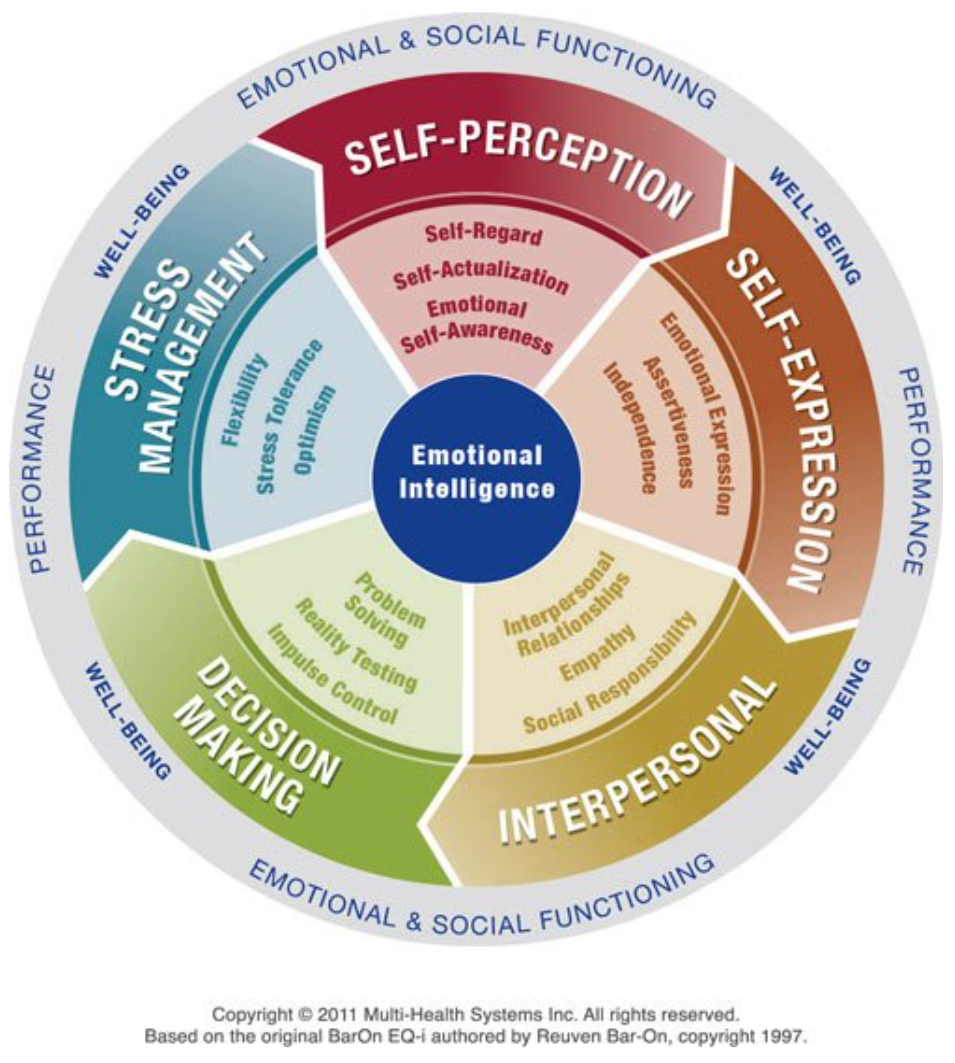
Self-Assessments for Emerging Leaders
Author: Johannes Traa
December 23, 2023
Summary
Throughout the course of my personal and professional development journey, I’ve come across various assessment tools. I like them because they provide frameworks through which to build self-understanding and understanding of others, enhancing our teamwork and leadership skills. This article is an overview of the assessment tools that I've found most useful.
Assessments
We all have the experience of working in a team and feeling that there is much we don't understand. And not just about the work itself, but about ourselves and each other. This realization is especially important for those in leadership positions who have an outsized impact on the tone of collaboration.
The following list of assessments covers personality, career aptitudes, strengths, work style, leadership orientation, and emotional intelligence. It's a good idea to derive a broad understanding of yourself across these facets because we really are quite complicated as individuals. A solid self-understanding enables more effective collaboration and communication, which in turn drives teamwork.
These assessments are not a silver bullet. But I have seen them provide a lot of clarity for people, especially in newly-formed teams. At the very least, they give you frameworks and a language through which to discuss people stuff.
Personality
For measuring personality, everyone’s go-to seems to be either the Myers-Briggs Type Indicator (Myers, 1962) or the Big Five model (Little, 2016). Myers-Briggs measures personality on four continua: Introversion-Extraversion, Sensing-Intuiting, Thinking-Feeling, and Judging-Perceiving. The categories all have fairly intuitive explanations, but it is less scientifically validated than the Big Five model.
It’s a nice one for quickly getting a sense of other people’s styles in a new group and why you might rub shoulders on occasion. It can also shift over time. In high school, I was a clear INTJ. Over the last decade, I’ve drifted towards the middle on the four continua and tend to register a bit more as an INFJ these days. I did a Myers-Briggs assessment in college soon after a bad break-up and my results were all over the place. So be careful about life circumstances skewing your results.

The 16 Myers-Briggs types and their nicknames.
Source: https://www.simplypsychology.org/the-myers-briggs-type-indicator.html.
The Big Five model measures, you guessed it, five components of personality: Openness, Conscientiousness, Extraversion, Agreeableness, and Neuroticism. This is the model that you see used often in psychology research. It’s less intuitive than Myers-Briggs, but honestly, the gap isn’t that big, and it’s worth reading one good book on it because it’s pretty fundamental.
A cool thing about the Big Five model is that its creation was data-driven (Wikipedia, n.d.). Researchers listed a ton of personality criteria and then did a study that collected Likert-scale responses from real people on those criteria. They performed a factor analysis and chose the top five factors that explained the majority of variation in the data. So the model is literally a decent low-rank approximation of a personality dataset!
Career aptitudes
It would be silly not to mention Holland Codes. This is old-school at this point but still a nice starting point if you’d like to know what an assessment says might be the best career choices for you. It rates your preferences in six categories: Realistic, Investigative, Artistic, Social, Enterprising, and Conventional. It’s more insightful if you’re in high school than if you’re mid-career, but still interesting regardless. The O*NET online job database (ONet, n.d.) has lots of information relating job descriptions to Holland Codes. They are also one of seven pillars for discovering your career path in a famous book for job seekers (Bolles, 2022).
Strengths
Gallup’s CliftonStrengths assessment (Gallup, n.d.) is a great way to get to know yourself better. It consists of a series of timed questions measuring your preferences in how you navigate the world.
The 34 strengths are split up into four categories: Executing, Influencing, Relationship Building, and Strategic Planning. Executing strengths are things like Focus and Achiever, while relationship building strengths are things like Empathy and Developer (of people). It’s useful for thinking about how you might adjust your decision-making or your environment to better suit your natural strengths.

The four domains of the CliftonStrengths model.
Source: CliftonStrengths report.
People like to quote their top 5. Mine are Learner, Responsibility, Context, Input, and Analytical. These are a blend of strategic thinking and executing strengths that reflect my conscientious engineer-ness. My next set of 5 are a mix from all four categories including Communication and Developer, which relate well to my coaching skillset.
Many people also find it thought-provoking to reflect on their weakest strengths and how they can (and already do) compensate for them by leaning into their top 10. My strengths fit well with why I find Stoic and other contemplative practices so helpful in boosting resilience.
The results are thought-provoking regardless of how you read into them. I’ve heard of this assessment being used in team-building during the Forming stage (Tuckman, 1965). Makes sense.
Work style
The Everything Workplace DiSC assessment (Everything DiSC, n.d.) is kind of a competitor to CliftonStrengths. It measures four facets of your working style: Dominance, Influence, Steadiness, and Conscientiousness. You can get a sense of what each one entails in the diagram below. As in other assessments, all four styles are seen as equally valid and the focus is on understanding your style and how it impacts your way of working with others.

Overview of the DiSC model.
Source: DiSC profile report.
If you know me, it’s no surprise that I’m strongly C-S with a growth trajectory into D. I like well-thought-out plans and I’m generally a cool cucumber who focuses on having functional collaborative experiences. The people I most clash with are the opposite: dominating visionaries. Good god, save me now. Big vague ideas, loud voice, no plan. To be fair, they sometimes think I'm a pain in the ass, too. And yet, we both have crucial roles to play.
I think many engineers are similar to me, actually, and many businesspeople show more of the dominating style. It doesn’t make sense to generalize, but in a tech innovation setting, you can easily convince yourself that there are characteristic “types” in the two camps. An assessment like DiSC helps to explain the differences and highlight whether friction exists because of style or substance.
Leadership orientation
The most insightful leadership “style” assessment I’ve come across is based on Bolman and Deal’s four-frame model of organizations (Bolman & Deal 2022). The idea, summarized in this article, is that there are four main lenses through which leaders view organizational dynamics: structural, human resource, political, and symbolic.
The assessment is a series of yes-no questions that measure your alignment with the four frames. Many first-time managers come out as structure- and HR-oriented. That basically means that they think in terms of org charts and individuals' needs. With time, they learn to think and act more politically to get things done in a business setting.
As with the other assessments, it gets you thinking about your approach to life. I once used this assessment in a team-building exercise and it really helped us get to know each other. One person on the team scored high on the symbolic frame and was good at telling stories about our work together. Another scored high on the HR frame and had a tendency to check in with quieter members of the group from time to time. It was convenient to be able to cheekily say things like “that’s so symbolic frame of you”. It’s a solid framework.
Emotional intelligence
My favorite assessment has to be the EQ-i 2.0 (EITC, n.d.), which measures emotional intelligence. You answer a bunch of questions and then get a highly-detailed report spanning five categories of EQ: self-perception, self-expression, interpersonal skill, decision-making, and stress management.

The emotional intelligence model used in the EQi-2.0 assessment.
Source: https://www.eitrainingcompany.com/eq-assessment/.
My results showed a few interesting things. The scores for self-awareness, empathy, and reality testing are all quite high, which matches my experience. Looking more closely, the scores in the self-perception category are higher than those in the self-expression category. In other words, I have more awareness than I know what to do with. It’s a double-edged sword that in many ways has driven my development over the years.
How about stress management? Stress tolerance is the lowest score out of all 15 facets. It’s not terribly low, just below average. That comes with the territory of being highly attuned to the world around me. The same intuition that gives me access to tons of social-emotional information makes me prone to overwhelm. What this means is simply that I need to be a self-care expert. For instance, this article covers my strategies for harnessing anxiety.
What’s nice about the report is that it gives you the opportunity to deep-dive into many facets of your EQ. Thinking back, I can see how I would have scored much lower on some of them when I was in college. And I can track the trajectory of my development over time. It’s empowering to celebrate your growth up to the present moment and then envision how much more you have left to go. It’s certainly easier to manage your development if you know where to focus.
There is a much cheaper, less-detailed assessment through Psychology Today (Psychology Today, n.d.). Taking it is a great learning experience on its own. However, I would highly recommend the EQ-i 2.0 if you're committed to developing your emotional intelligence.
Conclusion
I hope this overview was helpful to you! In my opinion, the combined cost of these assessments is nothing compared to the take-aways. The long-term benefits of your increased self-knowledge will compound over time. Many of them are also nice team-building tools in that they increase members’ awareness of each other’s styles, strengths, and preferences.
I suppose that the way you interact with these assessments is guided by your perspective on the world. If you think politically, you’ll want to strategically share your results so as to maximize your personal advantage. Power flows through information. But if you’re more relational, you might seek out others with whom to mutually share insights, relying on the power of disclosure to strengthen your bond with them. It’s entirely up to you. However you go about it, I recommend being mindful of your approach and of your reaction to the results. It's all part of the learning experience.
References
Bolles, R. N. (2022). What Color Is Your Parachute?: Your Guide to a Lifetime of Meaningful Work and Career Success. Ten Speed Press.
Bolman, L. G. & Deal, T. E. (2022). Reframing Organizations: Artistry, Choice, and Leadership (7th ed.). Jossey-Bass.
EITC. (n.d.). EQ-i 2.0. The Emotional Intelligence Training Company Inc. https://www.eitrainingcompany.com/eq-i/
Everything DiSC. (n.d.). Everything DiSC: A Wiley Brand. Everything DiSC. https://www.everythingdisc.com/
Gallup. (n.d.). Gallup: CliftonStrengths. Gallup. https://www.gallup.com/cliftonstrengths/en/252137/home.aspx
Little, B. R. (2016). Me, Myself, and Us. PublicAffairs.
Myers, I. B. (1962). The Myers-Briggs Type Indicator: Manual (1962). Consulting Psychologists Press.
ONet. (n.d.) O*Net OnLine Help: The Database. O*Net OnLine. https://www.onetonline.org/help/onet/database
Psychology Today. (n.d.). Emotional Intelligence Test. Psychology Today. https://www.psychologytoday.com/us/tests/personality/emotional-intelligence-test
Tuckman, B. W. (1965). Developmental Sequence In Small Groups. Psychological Bulletin 63(6), 384-399.
Wikipedia. (n.d.) Big Five personality traits. Wikipedia. https://en.wikipedia.org/wiki/Big_Five_personality_traits